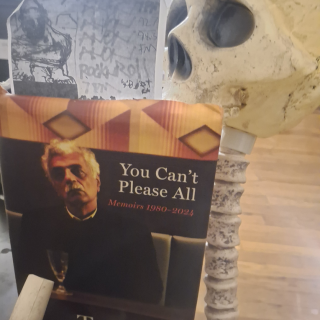In so many ways, Dr. Damon Tweedy was fortunate. He grew up in an intact home with loving, strict, and steeped-in-the-church parents who were gainfully employed and taught him to aim high. Tweedy’s parents did not even finish high school. His father worked all his life as a butcher in a grocery store; Tweedy’s mother spent forty years working for the federal government. Tweedy also had a great example in his older brother who graduated from college. He had done well in high school and college, but he arrived at Duke University School of Medicine full of apprehension and doubt. Could he cut it? He was from a working class family, attended a middling, state-supported public university, and would be one of a few black scholarship students, recruited in part to diversify the student body, in his classes. His classmates would primarily be middle- and upper-class white students who had attended prominent universities and could afford to be at Duke. Tweedy studied his tail off that first half of the semester. When he received his midterm grades, he was in the top half of all of his classes, and his doubts began to recede.
And then it happened. Returning from a break in the lecture, he found himself as a character in that long running television show, Brushes With Racism. (Imagine the title delivered in a “let’s-get-ready-to-rummmmble” tone.) His professor, Dr. Gale, walked toward him and asked if he had come to fix the lights. After a mental calculation about his respectable appearance–New England preppy–Tweedy answered no. Gale asked why he was there; Tweedy told Gale he was a student in the class. The professor abruptly turned and walked away. At the end of the term, Gale, clearly astonished by Tweedy’s excellent grades, congratulated him and offered Tweedy a position as a researcher in his lab. Tweedy purposefully did not follow up on the invitation. It was the last time he saw Gale on campus.
Tweedy is a modern-day example of what W. E. B. DuBois called the “double consciousness” that marks African Americans: being both black and American, and seldom fully allowed to be both.Black Man in a White Coat is terrific at showing the constant calculating we black people go through dozens of times a day. Was I just insulted? Why am I the only black person in the group? Have my education and achievements placed me in such a rarified world that I have taken on the prejudices of the dominant culture? Why am I sometimes embarrassed by the behavior of other black people? And why is virtually every disease known to man worse for and found at the highest rates in African Americans?
Along the way, Tweedy offers up many terrific examples of black patients and black doctors walking the swaying tightrope of the medical establishment: the young woman who denied being pregnant and having used cocaine when she was and she had, and delivered a pre-term stillborn baby boy; the teenage black boy who comes in with a GSW–that’s gunshot wound to the unknowing Tweedy; the obese woman with high blood pressure and diabetes who coded in the emergency room and despite heroic efforts, could not be saved; the white veteran Tweed treated for post traumatic stress syndrome and with whom he shared a love of shooting pool. Moreover, Tweedy must worry about his own health after being diagnosed with hypertension and early kidney disease, both of which are epidemic in the black community.
Tweedy writes that the health care system often works poorly for African Americans because of four factors. First, there are terrible financial disparities. African Americans are more likely than most to be uninsured or on public insurance. They often use the emergency room as a substitute for a family doctor, which means that some conditions that are treatable if caught early become life threatening or even fatal. They are also more likely to live in areas where merely finding a healthcare provider is a difficult task.
Second, Tweedy reminds us that the doctor/patient relationship has its own dynamic. Physicians are often accused of playing God, exhibiting rude behavior, not paying attention to and holding negative views and stereotypes of black people–all of these things have an impact on the quality of care blacks receive. On the other hand, black people have been historically mistrustful of the medical establishment. When my students begin their study of The Tuskegee Study of Untreated Syphilis in the Negro Male, they often have few facts. (It takes a lot of hard work on my part to convince them that government doctors did not infect the men with syphilis.) They do know, however, that it was something that racist white doctors did to innocent black patients a very long time ago.
Third, while America isn’t the healthiest nation on the face of the earth, African Americans are more likely than other groups to live unhealthy lives. Junk food, unhealthy cooking methods, food deserts, drug use, violence, sexually transmitted infections and the sheer emotional toll of racism in American society have a deleterious impact on African Americans.
Finally, Tweedy points out what we have known for a long time: the American health care system is badly broken. It will take the government, society, insurance companies and individuals engaged in a partnership to fix it. While Tweedy says that Obamacare is a good start, so very much more is needed. In today’s current political climate, that work is likely to remain undone.
Black Man in a White Coat is terrific and timely. And being black is definitely bad for one’s health.



